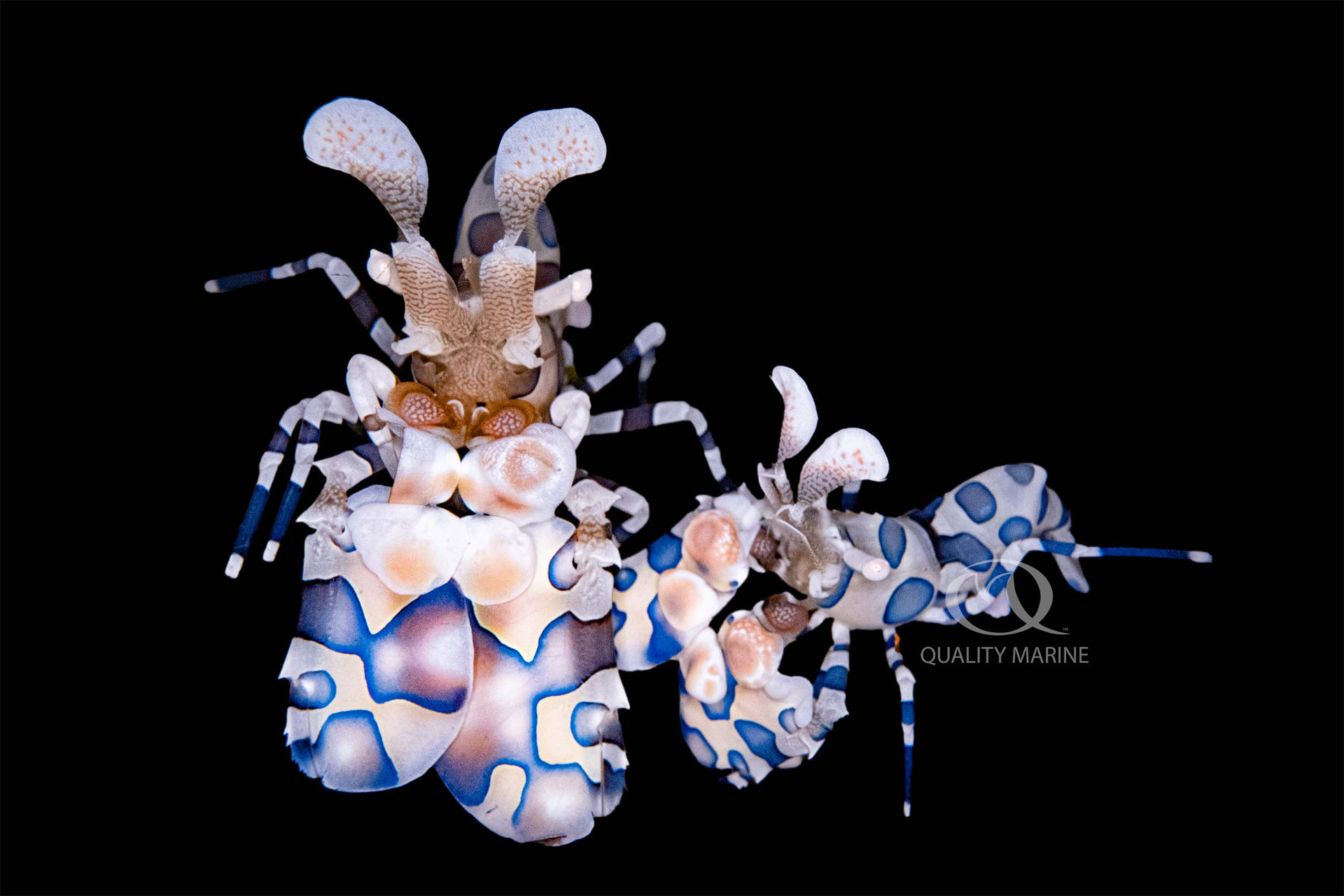Interesting Inverts

The Harlequin Shrimp (Hymenocera elegans) can be found on reefs throughout the Indo-Pacific. They are popular in the aquarium trade because of their cartoonishly elaborate carapace and oversized, paddle-like claws, and their propensity for eating nuisance starfish.
In every way, the Harlequin shrimp is an ideal aquarium inhabitant. They stay small, and adapt well to typical marine aquarium environments. They won't bother fish or corals, will eliminate Asterina and are stunningly beautiful. The one catch lies in the Asterina bit; they are obligate sea star eaters (eat only, and must have sea star, though larger adults may eat certain urchins as well). Loosely translated, this means you will have to continually buy them sea stars to eat, and you won't be able to keep sea stars in your display or they will get consumed / picked to death. There are “feeder” sea stars available, you won't need to blast the bank on Blue Linkia to feed your shrimp. Many people keep a small population of feeder stars in their sump which helps keep the sump clean and offers a long term storage solution, so one can always have live starfish on hand. In the best situations, those stars will breed, sending a constant stream of live food into the aquarium.
Other than diet, keeping Harlequin Shrimp is fairly straightforward. Because even the largest of them rarely reach two inches long, they can be kept in nano sized tanks, as long as the conditions are stable. Normal tropical marine aquarium parameters are the standard here: temperature in the mid to upper 70s, pH in the low 8s, specific gravity of 1.025 or so. Often you will read that they need elevated iodine to properly molt, but anyone doing regular water changes will not have to worry about Ca, Alk or iodine, unless you are keeping very demanding species like Tridacna clams. They are best kept singly or as pairs, though small groups are possible in larger aquariums as long as there is ample food. Lighting should be low to moderate, but they can adapt to a wide range on lighting conditions. As with all invertebrates, copper should be strictly avoided.
Successfully breeding Harlequins in the home aquarium is next to impossible. However, it has been done in labs, on commercial scale and so aquacultured specimens of Hymenocera elegans do show up on our stocklist when they become available. Aquacultured specimens have shown themselves to be just as hardy as their wild counterparts, though they will still need to be fed live starfish.
If you're looking for the most unique thing to put into a nano sized aquarium, it's going to be hard to compete with the otherworldly looks and interesting characteristics of the Harlequins. If you're ready to get them a steady supply of starfish, and can house them with other things that won't eat them, keeping these little marine gems isn't all that challenging and can be very rewarding for years to come.